How to Get Your Baby to Sleep Without a Pacifier
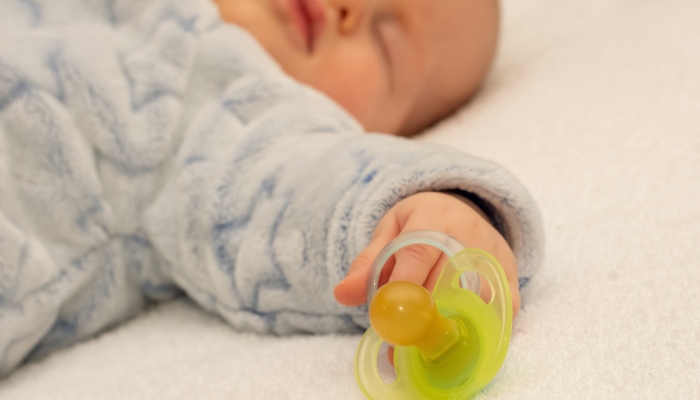
- Pacifiers can help greatly for preterm infants and SIDS prevention.
- They do not cause malocclusion until after three years of age.
- Pacifier usage is generally okay, but limiting use is best.
Pacifiers are a bittersweet topic for many parents, whether your baby is breastfed or formula-fed. Some toddlers have no problem getting rid of the pacifier, while others need a more gradual approach before they’re ready. Either is totally normal.
Pacifiers can be lifesavers for many parents with fussy babies, but the time will come when it’s time to start the pacifier weaning process.
This milestone can be stressful and confusing for parents. So many questions arise. It’s important to not only consider the emotional needs of your toddler but also their health and safety as you begin transitioning away from their pacifier.
Sleeping With a Pacifier: Pros and Cons
The benefits and fallbacks of the pacifier have always been an active conversation among physicians, and it’s been shown that they can positively and negatively impact your baby’s growth. It can also be a defining factor when your baby won’t sleep!
Breastfeeding
One of the main causes for concern is the possibility of pacifier use leading to early weaning, something that appeared to be the case in early studies. However, a more recent study found that, after monitoring over 200 mother-infant pairs for up to three months, pacifiers did not cause earlier weaning in newborns.
Still, the American Academy of Family Physicians (AAFP) recommends postponing pacifier use until breastfeeding habits are well-established, which generally takes about 3 to 4 weeks.
Dental Health
Pacifiers are often thought of as a precursor for dental problems such as malocclusion or the misalignment of teeth. While this is true, it’s not as common as most parents think.
According to the same AAFP study above, the prevalence of malocclusion was roughly 71 percent in babies who used a pacifier for more than 48 months, and it dropped to 32 percent for babies who weaned from 36-48 months. Those who were rid of the pacifier by 24 months had a risk of only 14 percent.
This study concluded that the risk of malocclusion is only present for babies with prolonged pacifier use exceeding three years of age.
Otitis Media
Otitis media is a middle ear infection that can be caused by the overuse of the pacifier, due to the jaw movement from sucking. Babies who are more dependent on the pacifier throughout the day have a higher risk of developing otitis media. In comparison, children who limit their use of pacifiers to only bedtime have a much lower risk, especially breastfed ones.
The AAFP recommends pacifier use be limited after the first six months to reduce the risk of otitis media and suggests that a parent wean their baby by ten months old.
Pain Relief
It’s no secret that pacifiers have a calming quality. However, their use is also helpful for reducing pain, preventing anxiety, and helping an overtired baby achieve better sleep. During the newborn stage, infants can experience various painful procedures, such as circumcision and immunizations, where pacifiers can be powerful allies.
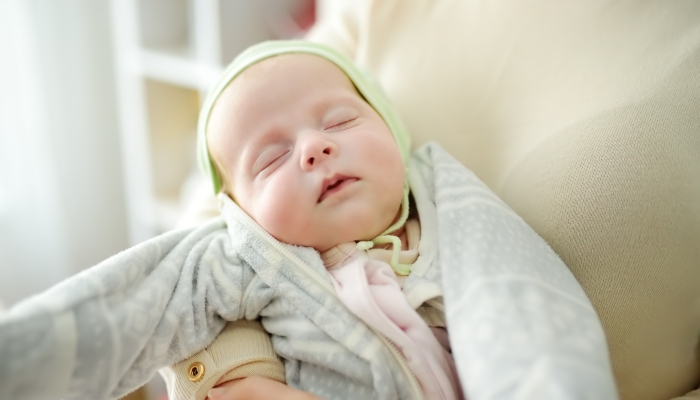
What’s the Right Age for a Baby to Stop Sleeping with a Pacifier?
Given what we know about pacifiers, it really becomes a parent’s preference once the child reaches six months of age. Here are a few considerations to keep in mind:
- If you’re concerned about things such as bacterial infections and otitis media, try weaning from the pacifier between 10 months and 24 months of age.
- If your baby’s emotional needs call for more extended use of the pacifier, no serious risks of altered dental alignment are present until usage exceeds three years old.
- With these factors in mind, a good age to get rid of the pacifier is anywhere between 24 months to 36 months.
Some babies may be ready sooner than others to give up their pacifier. Learn to pick upon emotional cues that your child is ready. Signs of this can be the following:
- Your baby will stay asleep through the night without regular wake-ups to look for the pacifier.
- Your baby is chewing on the pacifier rather than sucking.
- Your baby is creating holes in the pacifier due to aggressive chewing.
How to Get Your Baby to Sleep Without a Pacifier
If you’ve decided it’s time to ditch the pacifier at bedtime, there are some steps you can take to make the process easier for your baby and for you. Try some of the following:
- Limit daytime pacifier use. Before it’s time to remove the pacifier completely, make sure you have taken steps to limit its usage. To encourage your child to give up the pacifier throughout the day, consider praising them every time they hand it over to you.
- Offer praise and rewards. Depending on their age, you can also implement a reward chart. This helps many children feel optimistic about the milestone!
- Involve your child. It’s also important to recognize that involving your child in the decision to stop the pacifier can greatly assist in the transition to a good night’s sleep with no soother. PubMed’s pacifier guide for parents suggests giving older babies the option of throwing the pacifier away or leaving the pacifier under the pillow for the “pacifier fairy.”
- Offer an alternative. Feel free to get creative here! One fun way to do this is by putting the pacifier inside a Build-a-Bear. This way, the child is actively acknowledging the transition from the pacifier and can still use the bear as a soother.
- Try sleep training. Since parents tend to rely on pacifiers at bedtime, this is also a good time to brush up on sleep training methods to help your baby settle when they don’t have the pacifier to depend on.
- Take it slow. The changeover can also be smoother if you gradually reduce using the pacifier instead of quitting cold turkey.
Surviving Nighttime Without a Pacifier
The first week of sleep training for naps and bedtime without the pacifier can be difficult for your child. Expect most children to take a bit longer to fall asleep and be ready to provide extra cuddles so they are comfortable enough to drift off on their own.
If your family uses the Ferber method for sleep training, consider planning out when you will remove the pacifier, as it will take your child out of routine for the first week and they’ll have to go through the process again to regulate their sleep cycles.
Avoid weaning while your baby is feeling unwell. The process can be harder if you need to help your congested baby sleep or if you’re dealing with ear infections.
Tire them out.
To get your baby to fall asleep at bedtime, try keeping them active throughout the day so they are tired enough to fall asleep with minimal intervention. It’s easier to regulate a tired baby than an overstimulated baby!
It’s possible that the first few days without the pacifier could also disrupt your child’s nap routine, so anticipate early bedtimes instead while they navigate self-soothing. However, don’t skip naps or your baby may end up overtired.
Introduce another soother.
Although stuffed animals and blankets are considered a safety hazard for newborns, at the appropriate age, they can be an excellent alternative for soothing your child during nap time or as part of their bedtime routine.
Babies are only at risk of Sudden Infant Death Syndrome (SIDS) up until 12 months of age, so it is safe to introduce an alternative soother after that time. An alternative soother can help when your baby is fighting sleep while they navigate a new normal.
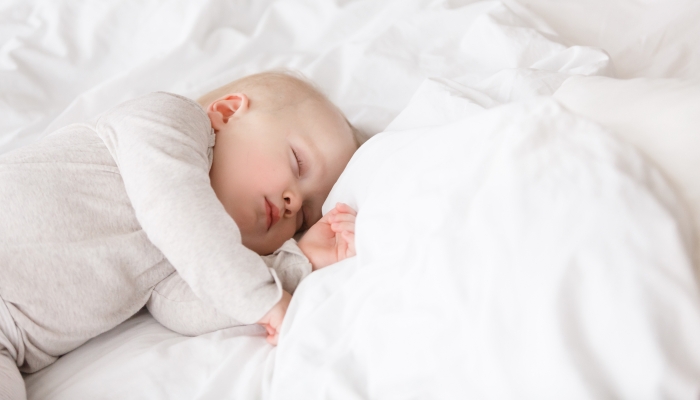
FAQ
Are pacifiers necessary?
Yes and no. Generally speaking, pacifiers are not necessary for healthy development, but a pacifier could be essential if you have a preterm infant who would greatly benefit from non-nutritive sucking.
How long does it take for a baby to forget about a pacifier?
Most children tend to stop asking about the pacifier altogether from day 3 to day 7. Hang in there!
Is it safe to sleep without a pacifier?
While the pacifier is not necessary for safe sleep, it has been thought to reduce the risk of SIDS in infants. Studies show they are less likely to turn onto their stomachs while using the pacifier, which assists in keeping their airways open.
Does cutting the pacifier work?
The “cutting” method is the process of cutting the tip of the pacifier over time, so eventually, the child grows dissatisfied and tosses it all together.
While some parents have had success with the cutting method, it’s not generally recommended for the following reasons:
- Children can ingest unsafe material.
- The broken material can be a choking hazard.
- The pacifier can spread more bacteria with a open tip.
Which is better: a pacifier or a thumb?
A pacifier creates less risk than a thumb in terms of teeth movement and is easier to keep clean than baby hands. It can also be removed completely—a thumb is around forever!
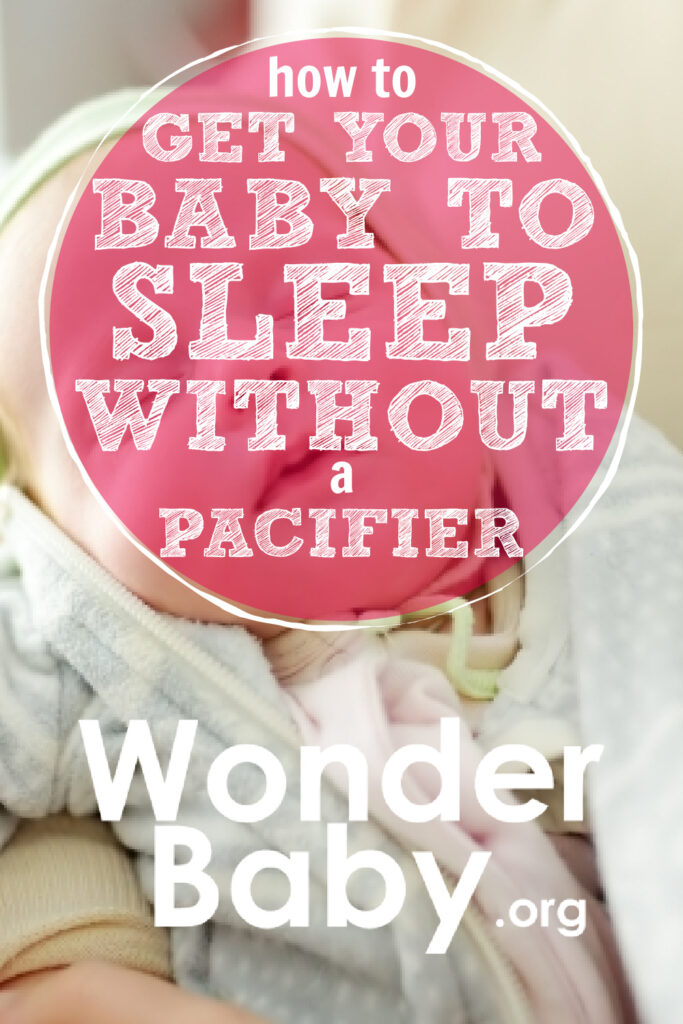
The information WonderBaby provides is not intended to be, and does not constitute, medical or other health advice or diagnosis and should not be used as such. Always consult with a qualified medical professional about your specific circumstances.
Related Posts
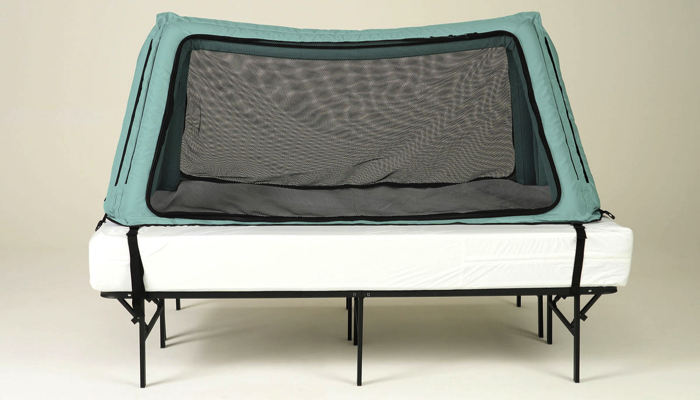
Sleep, Special Needs
Safe Place Bedding Travel Bed Review
Traveling with a special needs child can be stressful! Having a safe, durable, and easy to use travel bed can make traveling so much easier!
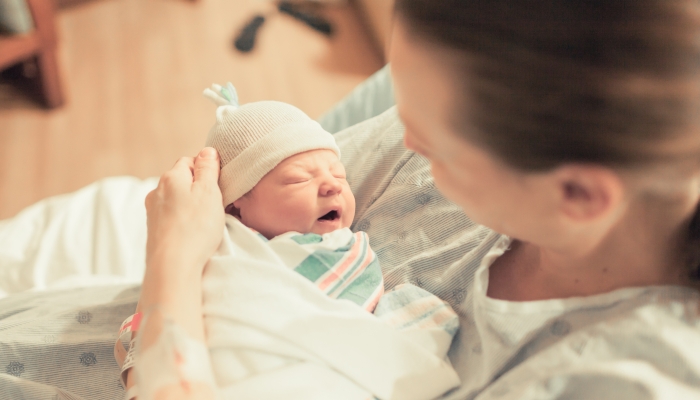
Sleep, Special Needs
Sleep Regimen for Premature Babies: Special Considerations
It can take premature babies much longer than their full-term peers to sleep for long stretches. A preemie sleep schedule may encourage better sleep.
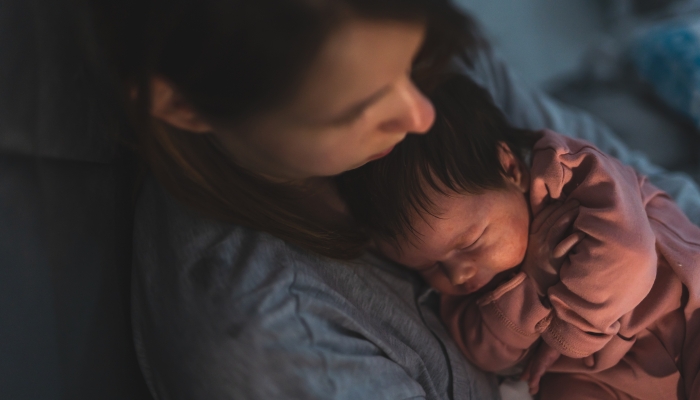
Sleep
Mastering the Bedtime Routine: 3 Tips for a Peaceful Night’s Sleep
From around six weeks, a newborn bedtime routine can help your baby learn the difference between day and night and prepare for a restful night’s sleep.